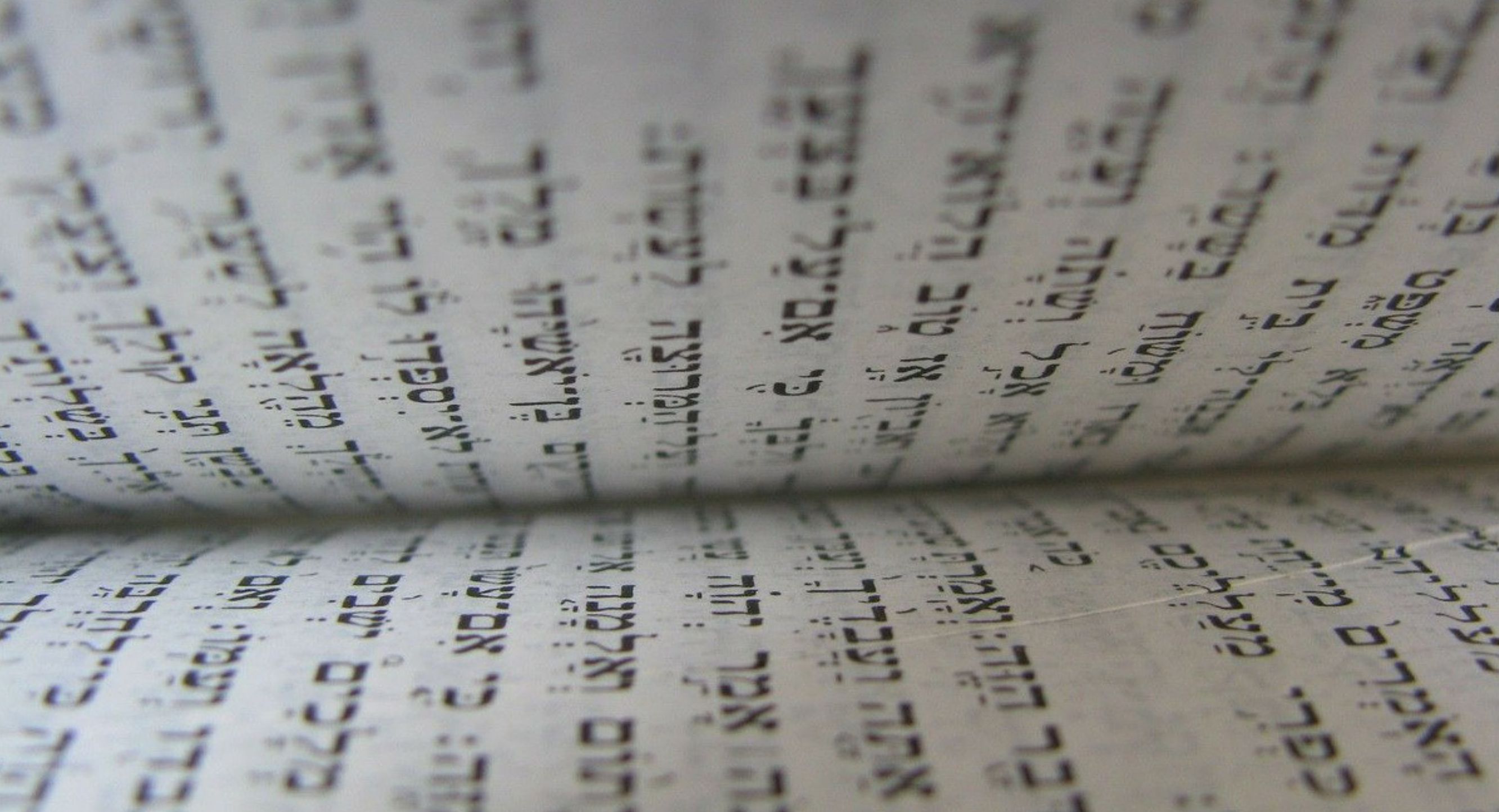Having the Father and the Son – the Structure, Main Theological Idea and Hermeneutical Principle of the Second Epistle of John
Kalina Wojciechowska
Christian Theological Academy in Warsaw , Polandhttps://orcid.org/0000-0002-0028-6905
Mariusz Rosik
Pontifical Faculty of Theology in Wrocław , Polandhttps://orcid.org/0000-0002-1943-8649
Abstract
The Second Epistle of John is one of the least commented on New Testament writings, with the vast majority of existing commentaries being linear. The authors of this article attempted to take a structural view of this short book. After discussing the structures of the letter proposed by scholars (part one), they proposed their own structure of the book, thanks to which the main theological idea of the letter (2 John 9) (part two) could be determined, along with a hermeneutical principle allowing for new interpretative insights into the book as a whole (part three). This principle can be put into the words: “having the Father and the Son.”
Keywords:
Second Epistle of John, exegesis, structure, classical rhetoric, structural analysis, epistolographyReferences
Aristotle, Art of Rhetoric (trans. J.H. Freese; rev. G. Striker) (Loeb Classical Library 193; Cambridge, MA: Harvard University Press 2020). (Crossref)
Atkin, D.L., Exalting Jesus in 1,2,3 John (Christ-Centered Exposition Commentary; Nashville, TN: B&H Publishing Group 2014) [ePUB].
Barclay, W., Listy św. Jana i Judy (trans. K. Wiazowski) (Warszawa: Słowo Prawdy 1982).
Beutler, J., Die Johannesbriefe (Regensburger Neues Testament 8/3; Regensburg: Pustet 2000).
de Boor, W., Listy Jana (trans. Z. Ligęza) (Warszawa: Zjednoczony Kościół Ewangeliczny 1984).
Brown, R.E., The Epistles of John. A New Translation with Introduction and Commentary (The Anchor Bible 30; Garden City, NY: Doubleday 1982).
Campbell, C.R., 1,2 & 3 John (The Story of God. Bible Commentary; Grand Rapids, MI: Zondrevan 2017).
Carson, D.A., “John and the Johannine Epistles,” It is Written. Scripture Citing Scripture (eds. D.A. Carson – H.G.M. Williamson (Cambridge: Cambridge University Press 1988) 245–264. (Crossref)
Culy, M.M., I, II, III John. A Handbook on the Greek Text (Waco, TX: Baylor University Press 2004).
Czerski, J., Ewangelia i Listy św. Jana. Wprowadzenie literackie, historyczne i teologiczne (Opole: Redakcja Wydawnictw Wydziału Teologicznego Uniwersytetu Opolskiego 2016).
Davids, P.H. – Moo, D.J. – Yarbrough, R.W., 1 and 2 Peter, 1, 2 and 3 John, Jude (Grand Rapids, MI: Zondervan 2002) [ePUB 2016].
Deissmann, A., Bible Studies Contributions Chiefly from Papyri and Inscriptions to the History of the Language, the Literature, and the Religion of Hellenistic Judaism and Primitive Christianity (Edinburgh: Clark 1909).
Dodd, C.H., The Johannine Epistles (London: Hodder & Stoughton 1947).
Funk, R.W., “The Form and Structure of II and III John,” Journal of Biblical Literature 86/4 (1967) 424–430. (Crossref)
Gądecki, S., Wstęp do pism Janowych (Gniezno: Gaudentinum 1996).
Gryglewicz, F., Listy katolickie. Wstęp. Przekład. Komentarz (Poznań: Pallottinum 1959).
Gundry, R.H., Commentary on First, Second and Third John (Grand Rapids, MI: Baker Academic 2011) [ePUB].
Heil, J.P., 1–3 John. Worship by Loving God and One Another to Live Eternally (Cambridge: Clarke 2015). (Crossref)
Jackman, D., Listy Jana Apostoła (Katowice: Credo 2002).
Jaroš, K. Die Johannesbriefe. Einleitung und Kommentar (Patrimonium theologicum; Aachen: Patrimonium 2019).
Kistemaker, S.J., Exposition of James, Epistles of John (New Testament Commentary; Grand Rapids, MI: Baker Academic 1987).
Klauck, H.-J., Die Johannesbriefe (Erträge der Forschung 276; Darmstadt: Wissenschaftliche Buchgesellschaft 1991).
Kümmel, W.G., Introduction to the New Testament (trans. A.J. Mattil) (Nashville, TN: Abingdon Press 1966).
Lieu, J., I, II, III John. A Commentary (The New Testament Library, Louisville, KY – London: Westminster John Knox 2008).
Lieu, J., The Second and the Third Epistles of John (London et al.: Bloomsbury 2015).
Marshall, I.H., The Epistles of John (The New International Commentary on the New Testament; Grand Rapids, MI: Eerdmans 1978).
Meecham, H.G., Light from Ancient Letters (Eugene: Allen 1923).
Mędala, S., “Trwanie w prawdzie,” R. Bartnicki et al., Ewangelia św. Jana, Listy Powszechne, Apokalipsa (Wprowadzenie w Myśl i Wezwanie Ksiąg Biblijnych 10; Warszawa: ATK 1992) 90–96.
Muchowski, P., Rękopisy znad Morza Martwego: Qumran – Wadi-Murabba’at – Masada (Kraków: Enigma Press 1996).
Muir, J., Life and Letters in the Ancient Greek World (London – New York: Taylor & Francis 2008) [ePUB]. (Crossref)
Painter, J., “The Johannine Epistles as Catholic Epistles,” The Catholic Epistles and Apostolic Tradition. A New Perspective on James to Jude (eds. K.W. Niebuhr – R.W. Wall) (Waco, TX: Baylor University Press 2009) 239–305.
Parsenios, G.L., First, Second and Third John (Paideia. Commentaries on the New Testament; Grand Rapids, MI: Baker Academic 2014).
du Rand, J.A., “Structure and Message of 2 John,” Neotestamentica 13 (1979) 101–120.
Roberts, W.R. (ed.), Demetrius On Style. The Greek Text of Demetrius “De Elocutione” Edited After the Paris Manuscript with Introduction, Translation, Facsimiles, etc. (Cambridge: University Press 1902).
Sarri, A., Material Aspects of Letter Writing in the Graeco-Roman World. 500 BC–AD 300 (Berlin – Boston, MA: De Gruyter 2018) [ePUB]. (Crossref)
Schnayder, J., [Introduction], List antyczny. Antologia (ed. J. Schnayder) (Wrocław: Ossolineum 2006).
Schnelle, U., Die Johannesbriefe (Theologischer Handkommentar zum Neuen Testament 17; Leipzig: Evangelische Verlagsanstalt 2010).
Smalley, S.S., 1, 2, 3 John (Word Biblical Commentary 51; Waco, TX: Word Books 1984).
Stott, J.R.W., The Letters of John (Tyndale New Testament Commentaries 19; Nottingham: IVP 2015) [ePUB].
Strecker, G., Die Johannesbriefe (Kritisch-exegetischer Kommentar über das Neue Testament 14; Göttingen:
Vandenhoeck & Ruprecht 1989).
“The Testament of Dan, the Seventh Son of Jacob and Leah,” The Apocrypha and Pseudepigrapha of the Old Testament (ed. R.H. Charles) (Oxford: Clarendon Press 1913) II, 332–335.
“The Testament of Gad, the Ninth Son of Jacob and Leah,” The Apocrypha and Pseudepigrapha of the Old Testament (ed. R.H. Charles) (Oxford: Clarendon 1913) II, 339–342.
“The Testament of Issachar, the Fifth Son of Jacob and Leah,” The Apocrypha and Pseudepigrapha of the Old Testament (ed. R.H. Charles) (Oxford: Clarendon Press 1913) II, 325–328.
“The Testament of Judah, the Fourth Son of Jacob and Leah,” The Apocrypha and Pseudepigrapha of the Old Testament (ed. R.H. Charles) (Oxford: Clarendon Press 1913) II, 314–325.
“The Testament of Zebulon, the Sixth Sin of Jacob and Leah,” The Apocrypha and Pseudepigrapha of the Old Testament (ed. R.H. Charles) (Oxford: Clarendon Press 1913) II, 328–332.
Trapp, M. (ed.), Greek and Latin Letters. An Anthology with Translation (Cambridge: Cambridge University Press 2003).
Watson, D.F., “A Rhetorical Analysis of 2 John according to Greco-Roman Convention,” New Testament Studies 35 (1989) 104–130. (Crossref)
Wendland, E.R., “What is Truth? Semantic Density and the Language of the Johannine Epistles (with Special Reference to 2 John),” Neotestamentica 24/2 (1990) 301–333.
Wróbel, M.S., “Drugi List św. Jana Apostoła,” M. Rosik – M.S. Wróbel – H. Langkammer, Komentarz do Listu św. Jakuba Apostoła, 1–2 Listu św. Piotra Apostoła, 1–3 Listu św. Jana Apostoła. Listu św. Judy i Apokalipsy (Komentarz Teologiczno-Pastoralny do Biblii Tysiąclecia 5; Poznań: Pallottinum 2015).
Yarbrough, R.W., 1–3 John (Baker Exegetical Commentary on the New Testament; Grand Rapids, MI: Baker Academic 2008).
Zevini, G., Le tre lettere di Giovanni (Commentari biblici; Brescia: Queriniana 2019).
Christian Theological Academy in Warsaw https://orcid.org/0000-0002-0028-6905
Pontifical Faculty of Theology in Wrocław
Rev. prof. Mariusz Rosik - an academic teacher in the Pontifical Faculty of Theology and in the University of Wrocław, Poland. He keeps courses of Exegesis of the New Testament, Biblical Environment, Jewish History and New Testament Greek. Rev. prof. M. Rosik has studied in several academic centers: Pontifical Faculty of Theology in Wrocław (M.A. in 1993; licentiate in biblical theology, 1996; doctoral degree in biblical theology, 1997), Pontifical Biblical Institute in Rome (licentiate in Sacred Scripture, 2001), Hebrew University of Jerusalem (one semester in 1998-1999), École Biblique et Archéologique Francaise de Jerusalem (one semester in 1998-1999). During his studies in Israel he paid attention to achieve perfect knowledge of biblical Hebrew and archeology of the Holy Land. Rev. Mariusz Rosik has published more than thirty books and many articles in the field of biblical and Jewish studies. His texts were published in eleven languages. He participates in biblical meetings, conferences and seminars. He is also a member of Studiorum Novi Testamenti Societas (Cambridge), Polish Biblical Society (Warszawa) and Associazzione degli Ex-alunni del Pontificio Istituto Biblico (Rome).
https://orcid.org/0000-0002-1943-8649License

This work is licensed under a Creative Commons Attribution 4.0 International License.
- Pursuant to the Act on Copyright and Related Rights of February 4, 1994, the Author of the publication grants to the Publisher of the journal „The Biblical Annals” e a non-exclusive and royalty-free license to use the Work submitted for publication, without time and territorial restrictions in the following fields of use:
a) record the Work and copy it by means of any technique (including printing and electronic recording) on all known data carriers (including IT, electronic and polygraphic), and in all IT systems (in particular those available online);
b) enter the Work into computer memory, disseminate the Work and its copies, as well as market the Work and its copies;
c) publicly perform, replay, display and screen the Work, as well as lend, rent and lease the Work and its copies;
d) make available, market and disseminate the Work and its copies via IT networks, and in particular via the Internet, including the promotion or advertising of the Work, the journal or the Publisher. - The Author shall further grant his/her consent for the Publisher to use and dispose of derivative works.
- The Publisher may sublicense the work.
- Third parties may use the articles and other materials containing the Works, or developed on the basis of the Works in line with the model Creative Commons Attribution 4.0 International (also referred to as CC BY 4.0).







